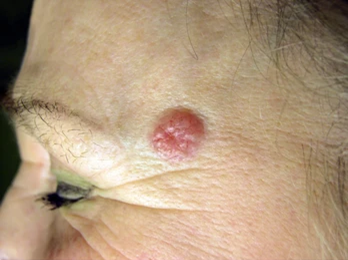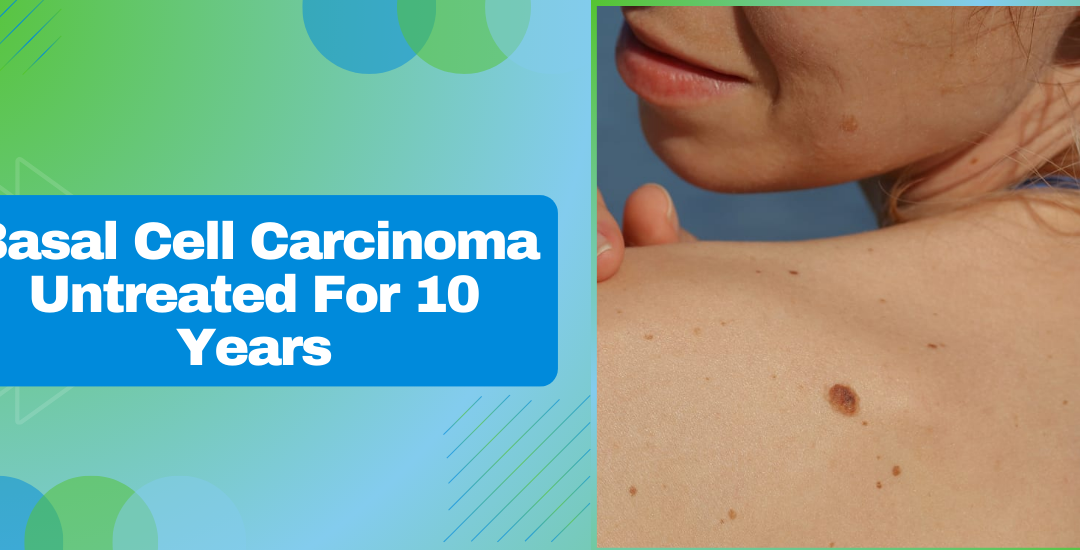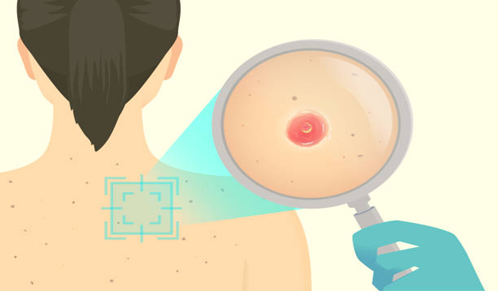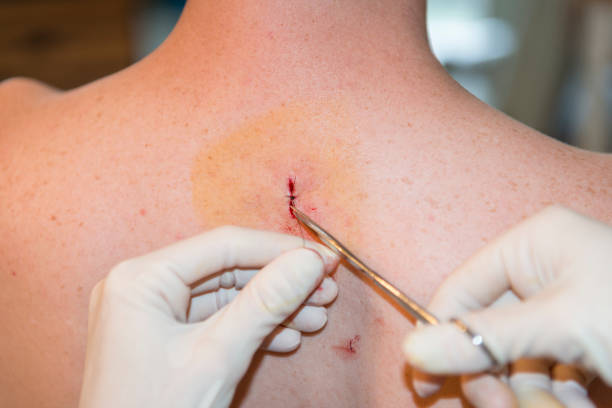Basal cell carcinoma (BCC) is the most common form of skin cancer. It is known for its slow growth and non-aggressive nature. However, when basal cell carcinoma is left untreated for 10 years, the risks and complications can become severe. Understanding the progression of untreated BCC is crucial. It helps you to recognize the importance of early detection and treatment.
Dr. Leena Jain, a renowned plastic surgeon in Borivali, has extensive experience in diagnosing and managing skin cancers, particularly Basal Cell Carcinoma. Her commitment to excellence and empathy has established her as a trusted authority in the field.
Dr. Jain has provided valuable insights regarding the risks associated with untreated BCC, effective treatment options, and the crucial role of early intervention in preventing complications.
Are you wondering about the consequences of basal cell carcinoma untreated for 10 years? Let’s find out.
Untreated basal cell carcinoma: What happens after 10 years?

- Deeper Tissue Damage: BCC can grow into deeper tissues, affecting muscles and bones.
- Increased Risk of Disfigurement: As the tumor grows, it can lead to significant cosmetic concerns.
- Higher Difficulty in Treatment: Larger, more entrenched tumors are harder to treat effectively.
- Potential for Rare Metastasis: While rare, long-standing BCC can metastasize if left unchecked.
- Complications in Nearby Structures: BCC near the eyes, ears, or nose can impair function.
Seeking early treatment is crucial. A consultation with a plastic surgery expert can guide you towards the right treatment plan.
Curious about the longevity of untreated basal cell carcinoma? Here’s what you need to know.
Can you live with untreated basal cell carcinoma for 10 years?
 Living with basal cell carcinoma untreated for 10 years is possible. But, it comes with significant risks. The slow-growing nature of BCC means that immediate life-threatening complications are rare, but this does not imply safety or health. Over time, the lack of treatment can lead to complex medical and cosmetic problems.
Living with basal cell carcinoma untreated for 10 years is possible. But, it comes with significant risks. The slow-growing nature of BCC means that immediate life-threatening complications are rare, but this does not imply safety or health. Over time, the lack of treatment can lead to complex medical and cosmetic problems.
Firstly, untreated BCC continues to grow, albeit slowly, and can invade deeper layers of the skin and underlying tissues. This growth can cause pain, bleeding, and serious infections, especially if the skin breaks down.
Secondly, the cosmetic impact can be profound. Large, untreated tumors may require extensive surgeries later, potentially leading to scarring and disfigurement that could have been minimized with earlier treatment.
Don’t wait until it’s too late. Consult with a skin cancer expert to manage your condition effectively.
How risky is it to ignore basal cell carcinoma for years? Here’s what you should consider.
Risks of Untreated Basal Cell Carcinoma for years
Basal cell carcinoma if left untreated for an extended period is a gamble with your health. Here are the risks associated with long-term untreated BCC:
- Progressive Skin Damage: The cancer can destroy skin and deeper tissues, leading to serious wounds.
- Functional Impairment: BCC near vital organs like the eyes or nose can impair normal functions.
- Surgical Complications: Larger, neglected tumors might require more invasive surgery.
- Psychological Impact: Visible skin cancers can lead to emotional and psychological distress.
- Increased Health Care Costs: Delayed treatment often results in more complex, expensive care.
- Risk of Complications: Untreated cancer can cause complications if it infects or interacts negatively with other health conditions.
Considering surgery for longstanding basal cell carcinoma? Here’s what you need to know.
Surgery options for untreated basal cell carcinoma for 10 years
- Excisional Surgery: Cuts out the cancer with some healthy tissue around it.
- Mohs Surgery: Removes cancer layer by layer, preserving healthy tissue, ideal for sensitive areas.
When patients present so late, surgical excision is the only choice for successful tumor removal. However, this is also challenging due to involvement of vital structures like angles of the eye, eyelid margins, bony involvement, etc. Reconstructive surgery with flaps is a must with surgery at this point due to extensive involvement and tumor infiltration. Flaps from adjacent area like cheek or neck are used depending on the location of the tumor. Large defects resulting from removal of large cancers will need free flaps and microsurgical reconstruction.
Ready to wrap up what we’ve covered about basal cell carcinoma? Here’s the summary.
Conclusion
Basal cell carcinoma is typically slow-growing and not immediately life-threatening. However, neglecting it for a decade can lead to severe complications. Over time, it can invade deeper skin layers and underlying structures, potentially causing significant disfigurement and even impairing the function of nearby organs such as the eyes and nose.
Moreover, the longer BCC remains untreated, the more complex and invasive the required treatments can become. These might include extensive surgical interventions that could have been minimized or avoided altogether with earlier detection and management.
Dr. Leena Jain, a plastic surgeon in Borivali, is an expert in diagnosing and treating skin cancers. She emphasizes the importance of early intervention. Her advanced therapeutic techniques and compassionate approach ensure the best possible outcomes for her patients. Consult with specialists like Dr. Jain to stay vigilant and proactive about skin health.
FAQs
How many years does it take for basal cell carcinoma to spread?
Basal cell carcinoma typically takes many years to spread significantly.
Can you have basal cell carcinoma for years?
Yes, you can have basal cell carcinoma for years due to its slow growth.
Can basal cell carcinoma come back after Mohs surgery?
While rare, basal cell carcinoma can occasionally return after Mohs surgery.
What are the warning signs of basal cell carcinoma?
Warning signs include persistent, non-healing sores, shiny or waxy bumps, scar-like patches, and any skin growth that changes in size, shape, or color.



